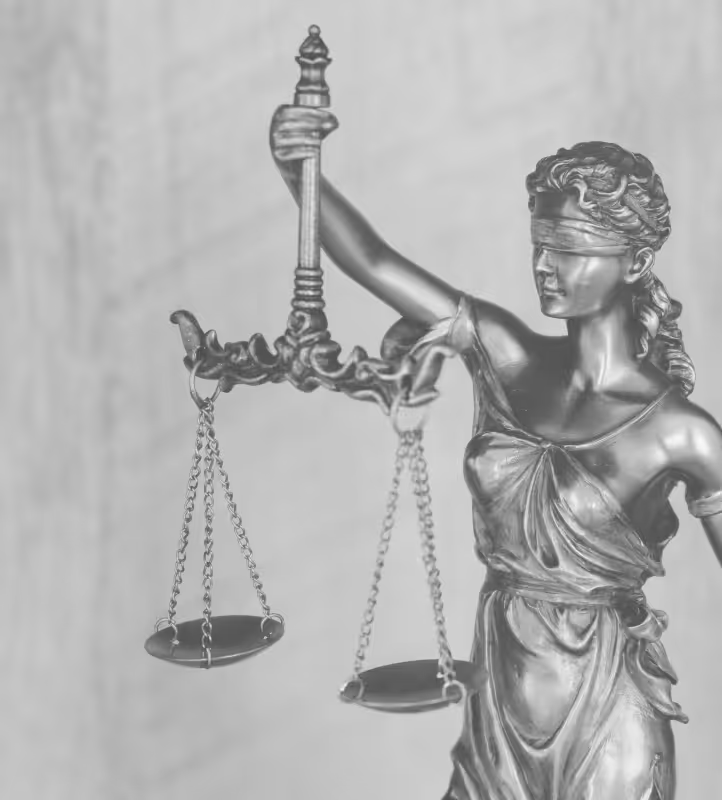Dangerous Driving Causing Grievous Bodily Harm

Defending Dangerous Driving Causing Grievous Bodily Harm
If you are charged with dangerous driving causing grievous bodily harm, timely and professional legal advice is crucial. At Brightstone Defence, we provide experienced representation to protect your rights and future. Our services include:
- Comprehensive case assessment, reviewing whether your driving was dangerous and whether causation of injury can be established.
- Identifying potential mitigating factors and defences, including alcohol or drug influence, excessive speed, and aggravating circumstances.
- Tailored legal guidance, ensuring your case is presented effectively to reduce penalties and achieve the best possible outcome.
If you are facing such serious charges, contacting Brightstone Defence immediately ensures expert support during the legal process and maximises your chances of protecting your future, employment, and personal opportunities.
What is Dangerous Driving Causing Grievous Bodily Harm?
This offence is legislated under section 52A(3) of the Crimes Act 1900 and encompasses that an individual is guilty of this offence if:
“the offence of dangerous driving occasioning grievous bodily harm if the vehicle driven by the person is involved in an impact occasioning grievous bodily harm to another person and the driver was, at the time of the impact, driving the vehicle
(a) under the influence of intoxicating liquor or of a drug, or
(b) at a speed dangerous to another person or persons, or
(c) in a manner dangerous to another person or persons.”
Under section 52A(4) of the act, the legislation sets out the offence of aggravated dangerous driving causing grievous bodily harm. This states that a person is guilty of the offence if a person commits dangerous driving but under aggravating circumstances.
Circumstances of aggravation under this section include:
- The content of alcohol in the accused breath or blood
- The accused was driving the vehicle at a speed of more than 45km/h over the speed limit applicable to that road
- The accused was driving to escape pursuit by police
- The accused ability to drive was substantially impaired by the fact that the accused was under the influence of drugs or a combination of drugs
Elements the Prosecution Must Prove
To secure a conviction for dangerous driving causing grievous bodily harm, the prosecution must prove each of the following elements beyond reasonable doubt:
- The accused was driving a motor vehicle.
- The driving occurred on a public road or road-related area.
- The manner or speed of driving was dangerous to the public.
- The driving caused grievous bodily harm to another person.
- (For aggravated offences) The driving occurred in one or more aggravating circumstances as defined under section 52A(4).
If any one of these elements is not proven beyond reasonable doubt, the charge must be dismissed.
Possible Defences
This section has various defences that may be applicable to your case. This offence carries possible substantial penalties if found guilty therefore it is important to seek legal advice to understand the possible defences that may be available to you. Possible defences include:
- The accused was not driving
- The accused was not under the influence of drugs or alcohol
- The accused was not speeding
- The accused was not driving dangerously
- Grievous bodily harm was not occasioned
Potential Penalties
The consequences to being convicted of this offence can be dire to your future, hence it is crucial to seek legal representation. The maximum penalty for this offence is 7 years imprisonment.
If the offence was committed under circumstances of aggravation and the accused is found guilty, the maximum penalty is 11 years imprisonment.

Legal Process
& Options
It is highly advisable to seek legal advice. A lawyer can help you present your case in the best light and may be able to assist in reducing the penalty through strong submissions on your behalf.
Pleading
Not Guilty
If you believe that you do not attain the responsibility for the charge, you can dispute this if:
- You dispute being the driver
- You deny that you were driving dangerously under the law
- You argue that your driving was not the cause of the injury
Pleading
Guilty
If you decide to plead guilty to a charge of dangerous driving, you are admitting to the offence. This can demonstrate remorse and cooperation, which may work in your favour during sentencing.
After your guilty plea is entered, the matter will move to a sentencing hearing. During this hearing, the court will consider several factors when determining your penalty, including:
- The seriousness of the driving and whether anyone was injured
- Your prior traffic or criminal history
- Whether you have shown remorse or taken steps to address the behaviour (e.g. attending a traffic offender program)
- The impact on any victims
- Any mitigating circumstances (e.g. medical issues, momentary lapse in judgment)
By pleading guilty early, you may also be entitled to a sentencing discount, which can reduce the severity of the penalty imposed, potentially avoiding a harsher sentence.
Dangerous driving is a serious criminal offence that occurs when a person drives a motor vehicle in a manner that is dangerous to the public, resulting in:
- Death (s 52A(1)) or
- Grievous bodily harm (GBH) (s 52A(3))
It falls under section 52A of the Crimes Act 1900 (NSW).
“Dangerous” means more than simply negligent or careless, it involves driving in a way that poses a real and obvious risk to the safety of others.
This includes:
- Excessive speeding
- Driving under the influence of alcohol or drugs
- Aggressive driving (e.g., road rage, tailgating)
- Ignoring traffic signals or rules
- Street racing
- Driving while fatigued or distracted
It is assessed objectively, i.e., would a reasonable person see this as dangerous?
A dangerous driving offence becomes aggravated if it involves:
- High-range alcohol (BAC over 0.15)
- Illicit drugs in system
- Excessive speed (more than 45 km/h over the limit)
- Driving to escape police pursuit
- Driving while fatigued to the point of impairment
These increase the maximum penalties and make a custodial sentence more likely.
Yes. Conviction for dangerous driving results in automatic licence disqualification.
For dangerous driving occasioning death:
- Automatic disqualification: 3 years (can be reduced to 12 months)
For dangerous driving occasioning GBH:
- Automatic disqualification: 3 years (can be reduced to 12 months)
In aggravated cases, longer disqualifications or interlock orders may apply.
If you are charged with dangerous driving, it is crucial to seek legal advice as soon as possible. A lawyer can guide you on plea options, defence strategies, and help mitigate penalties. Contact Brightstone Defence immediately to protect your rights and future.
Dangerous driving is a serious criminal offence that occurs when a person drives a motor vehicle in a manner that is dangerous to the public, resulting in:
- Death (s 52A(1)) or
- Grievous bodily harm (GBH) (s 52A(3))
It falls under section 52A of the Crimes Act 1900 (NSW).
“Dangerous” means more than simply negligent or careless, it involves driving in a way that poses a real and obvious risk to the safety of others.
This includes:
- Excessive speeding
- Driving under the influence of alcohol or drugs
- Aggressive driving (e.g., road rage, tailgating)
- Ignoring traffic signals or rules
- Street racing
- Driving while fatigued or distracted
It is assessed objectively, i.e., would a reasonable person see this as dangerous?
A dangerous driving offence becomes aggravated if it involves:
- High-range alcohol (BAC over 0.15)
- Illicit drugs in system
- Excessive speed (more than 45 km/h over the limit)
- Driving to escape police pursuit
- Driving while fatigued to the point of impairment
These increase the maximum penalties and make a custodial sentence more likely.
Yes. Conviction for dangerous driving results in automatic licence disqualification.
For dangerous driving occasioning death:
- Automatic disqualification: 3 years (can be reduced to 12 months)
For dangerous driving occasioning GBH:
- Automatic disqualification: 3 years (can be reduced to 12 months)
In aggravated cases, longer disqualifications or interlock orders may apply.
If you are charged with dangerous driving, it is crucial to seek legal advice as soon as possible. A lawyer can guide you on plea options, defence strategies, and help mitigate penalties. Contact Brightstone Defence immediately to protect your rights and future.
SUCCESS CASES & ARTICLES
Brightstone Defence delivers focused criminal defence services year-round and has built a strong track record of successful outcomes.
Meet our lawyers
WORLD CLASS
REPRESENTATION
100+ 5 Star Reviews
Personalised legal strategies tailored to each case
Recognised leaders in criminal defence law
Free initial consultation and case evaluation
Proven success in high-stakes and complex cases
Get AN instant estimated Quote
and a free consultation session
Facing criminal charges? Our experienced criminal defence lawyers are here to help. Book your free consultation now to discuss your case and understand your options.







